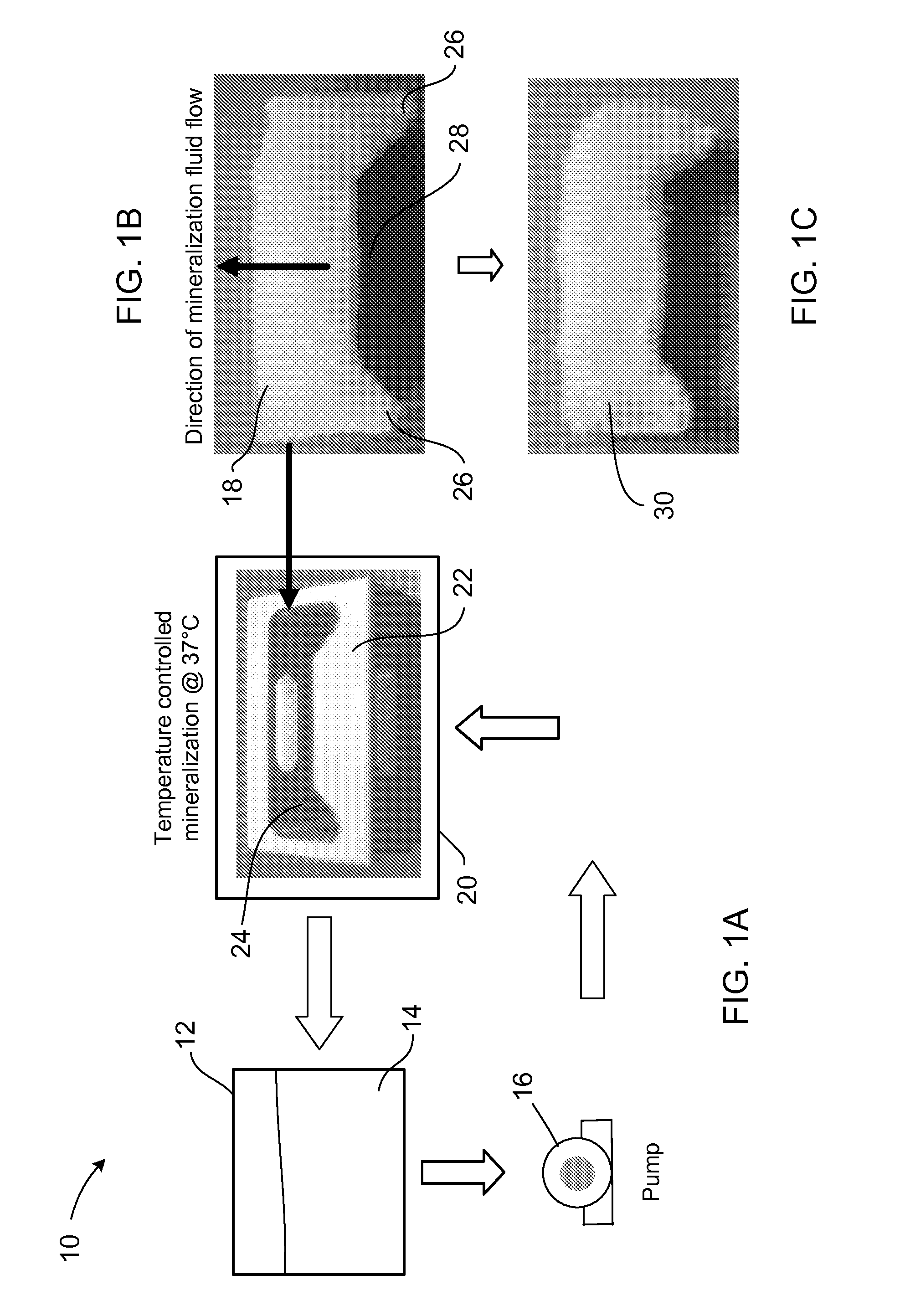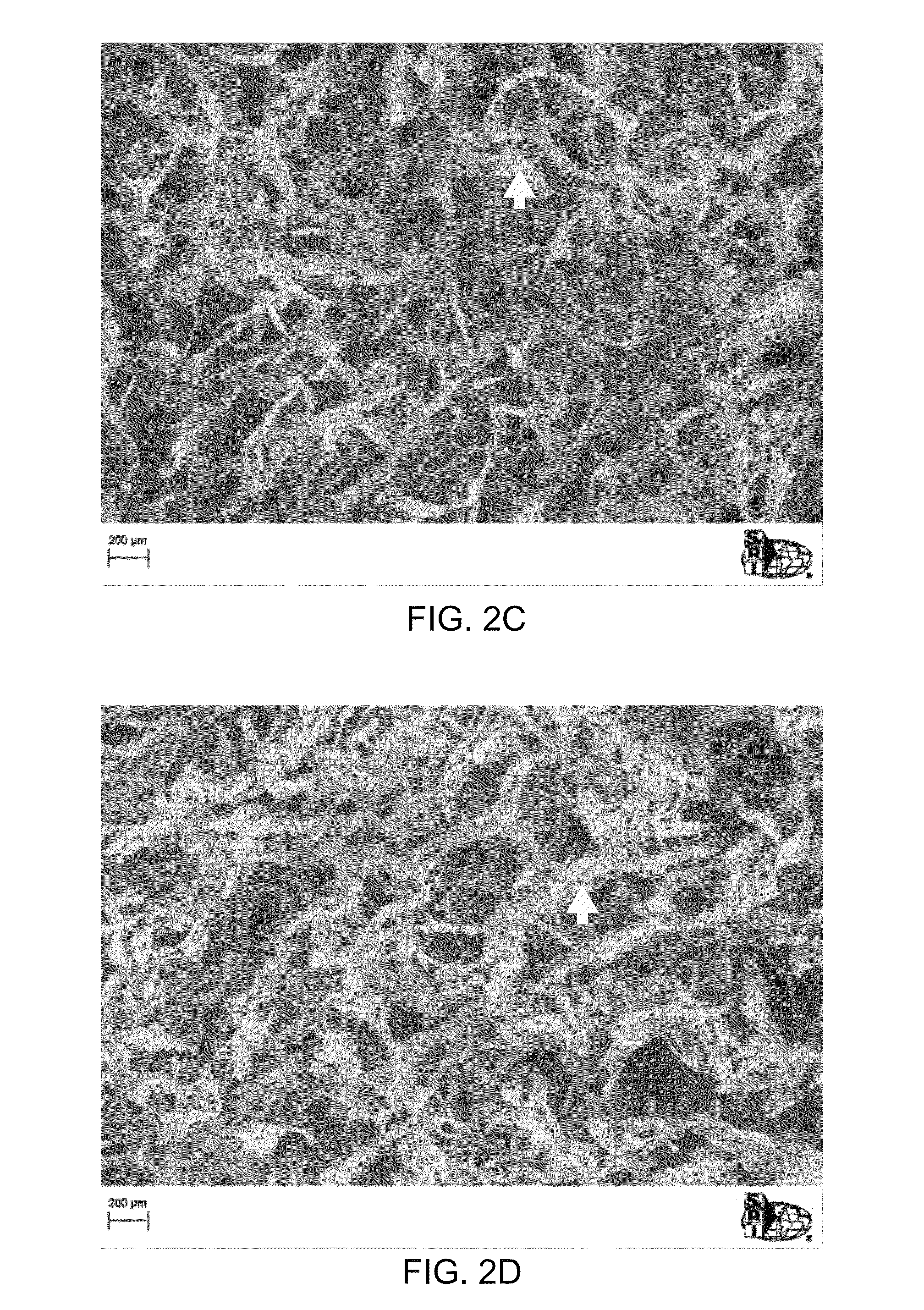Fabrication of bone regeneration scaffolds and bone filler material using a perfusion flow system
a perfusion flow and scaffold technology, applied in tissue regeneration, prosthesis, medical science, etc., can solve the problems of obstructing the pores of collagen scaffolds, affecting the healing effect of collagen/ha composites, etc., to accelerate the bone repair/reconstruction/regeneration process, the effect of stiffness and/or elasticity
- Summary
- Abstract
- Description
- Claims
- Application Information
AI Technical Summary
Benefits of technology
Problems solved by technology
Method used
Image
Examples
Embodiment Construction
[0044]It may be appreciated that the present disclosure is not limited in its application to the details of construction and the arrangement of components set forth in the following description or illustrated in the drawings. The invention(s) herein may be capable of other embodiments and of being practiced or being carried out in various ways. Also, it may be appreciated that the phraseology and terminology used herein is for the purpose of description and should not be regarded as limiting as such may be understood by one of skill in the art.
[0045]Bone is composed of approximately 70% inorganic mineral, 20% organic matrix, and 10% water. The mineral content of bone is predominantly hydroxyapatite (HA), a naturally occurring mineral form of calcium apatite (phosphate mineral) with the formula Ca5(PO4)3(OH), while the organic matrix is composed mainly of type I collagen (˜90%) and small amounts (˜10%) of non-collagenous proteins (NCPs). Biomechanically, the inorganic mineral (i.e., ...
PUM
| Property | Measurement | Unit |
|---|---|---|
| pore size | aaaaa | aaaaa |
| porosity | aaaaa | aaaaa |
| distance | aaaaa | aaaaa |
Abstract
Description
Claims
Application Information
 Login to View More
Login to View More - R&D
- Intellectual Property
- Life Sciences
- Materials
- Tech Scout
- Unparalleled Data Quality
- Higher Quality Content
- 60% Fewer Hallucinations
Browse by: Latest US Patents, China's latest patents, Technical Efficacy Thesaurus, Application Domain, Technology Topic, Popular Technical Reports.
© 2025 PatSnap. All rights reserved.Legal|Privacy policy|Modern Slavery Act Transparency Statement|Sitemap|About US| Contact US: help@patsnap.com



